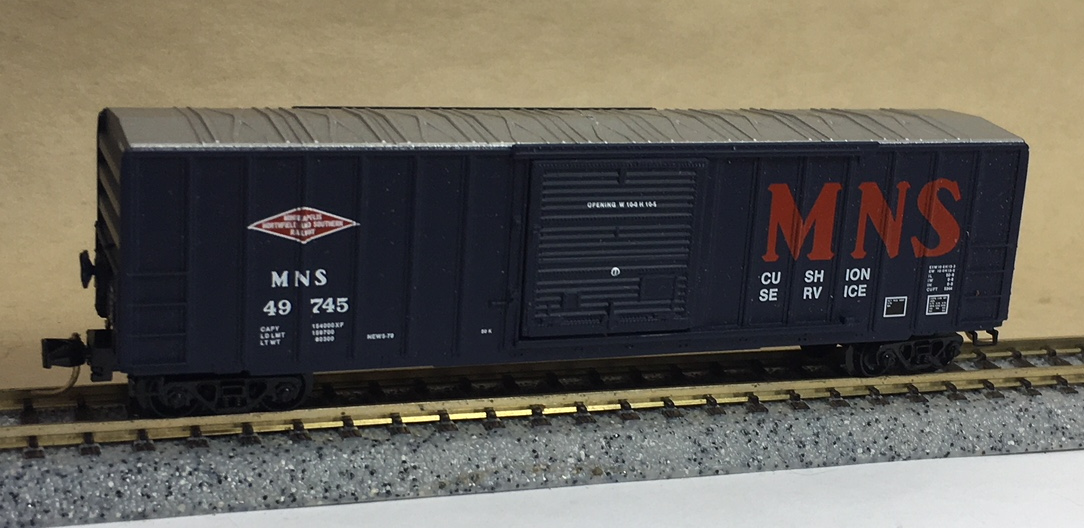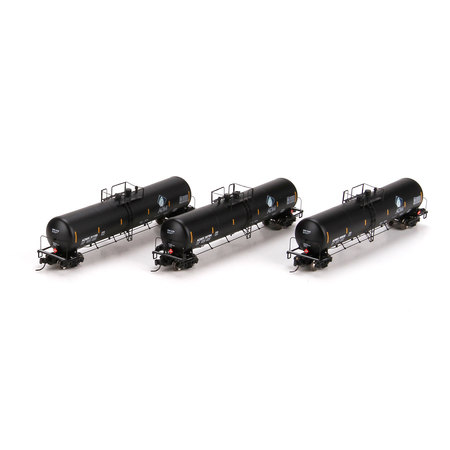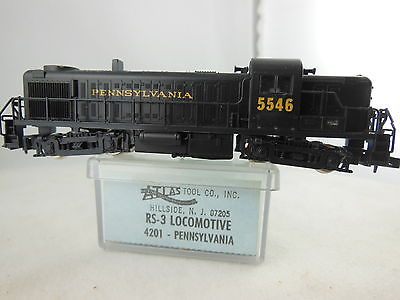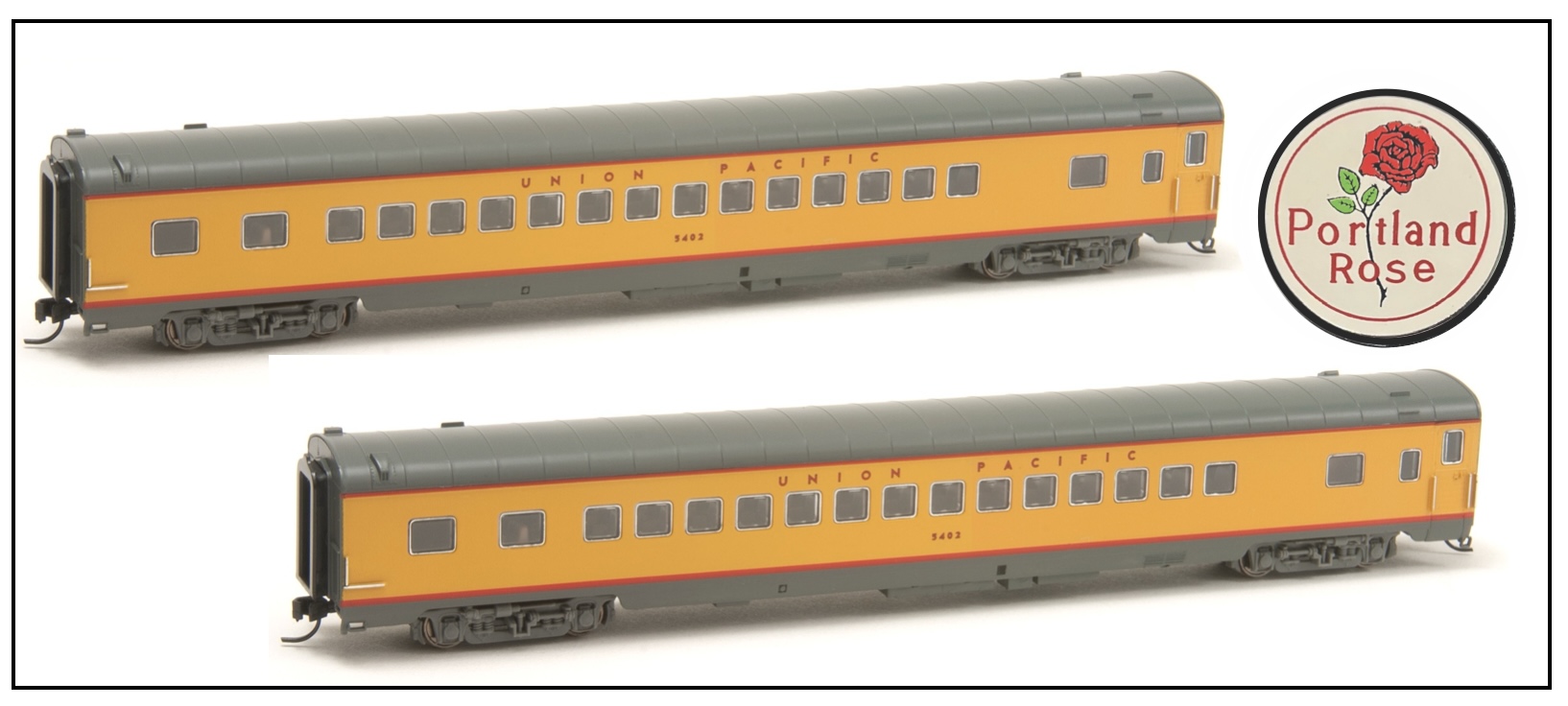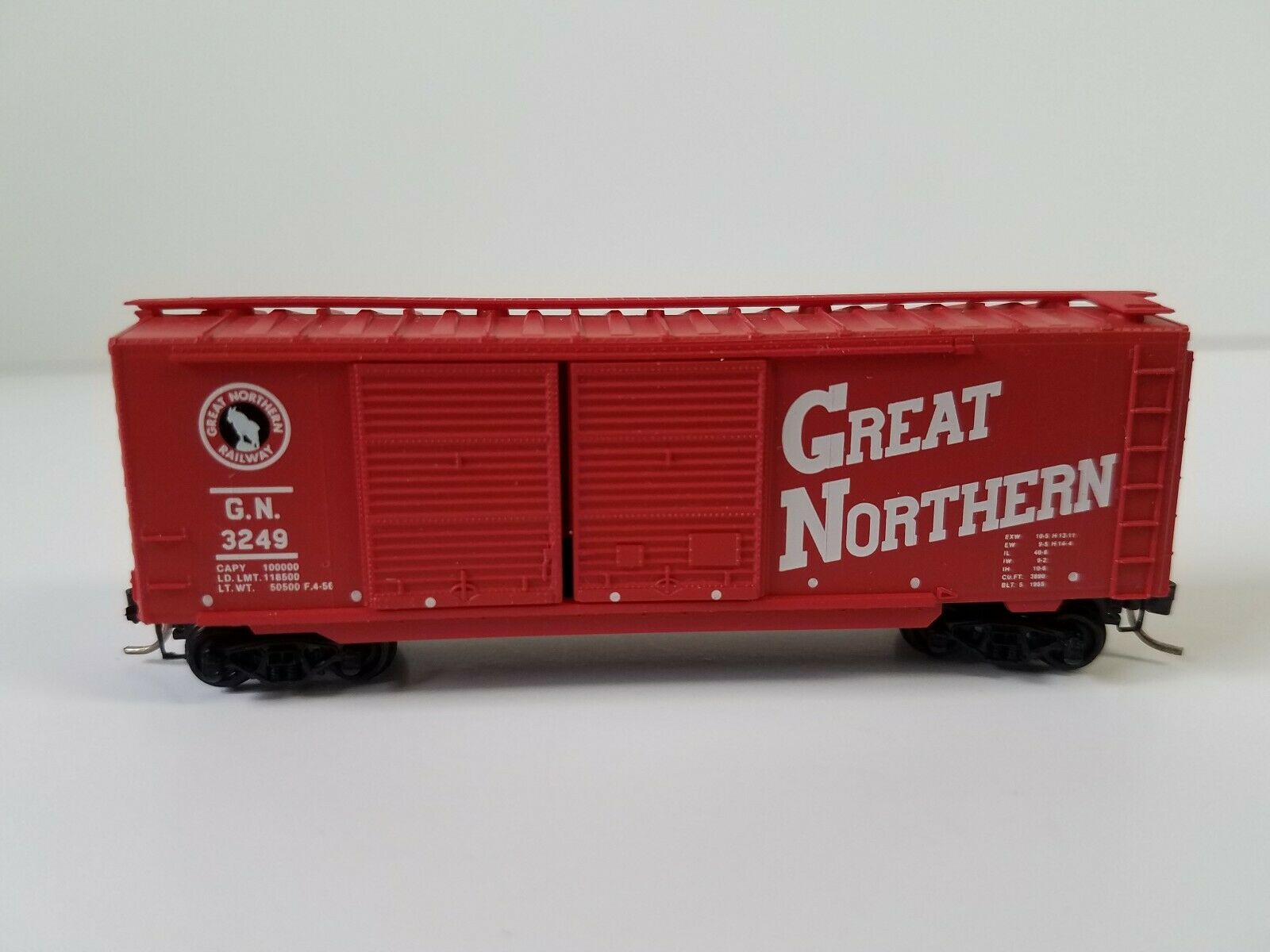Model Information: This model was first produced by Kadee in February of 1981. It is a model of a 50 Foot Steel Rib-Side Single Sliding Door Boxcar. Specifically, this Micro-Trains body style models the FMC 50' 5077 Single Sliding Door prototype. It is also used by Micro-Trains to model Pullman Standard 50' boxcars. Hence on some releases, this car is labeled as a Pullman Standard and in other cases it is labeled as an FMC boxcar, and it also is frequently labeled as a '50' Rib Side Box Car[sic]' with no mention of prototype whatsoever. It appears to be closest to the FMC 5077 boxcar prototype (from the 1970s) in any event. These models can appear with any one of multiple different sliding door types. The doors for this model are operating ones (cool!).
Prototype History: In the 1970's with the growth of the Per Diem business model, FMC produced a series of 50 foot box cars in different configurations. The single-sliding-door configuration is one of the best known and used widely by many different railroads. These cars were produced using the Gunderson metal works which FMC had acquired in 1965. In late 1975, FMC began producing a 5,077-cubic-foot Plate B box car for IPD and Railbox service. FMC's 5077s have seven panels to either side of the 10-foot door, an X-panel roof, and non-terminating ends that are slightly different from those used on FMC's earlier cars. Note how the sidesill is notched all the way back to the bolsters, a key feature of FMC's mature design.
The main difference between the 5077 cu. ft cars built by FMC vs the 5277-5347 cu. ft cars built by the same manufacturers is the overall height of the car, the smaller 5077 cars were Plate B while the larger 5277-5347 cars were Plate C. Over 4,300 cars were produced from 1975-1979 by FMC's Portland, Oregon plant. The cars were delivered in numerous colorful shortline paint schemes, as well as the nationwide car pool fleet of Railbox. Many secondhand cars were later seen in Class 1 railroads and large leasing company fleets under additional shortline reporting marks.
The main difference between the 5077 cu. ft cars built by FMC vs the 5277-5347 cu. ft cars built by the same manufacturers is the overall height of the car, the smaller 5077 cars were Plate B while the larger 5277-5347 cars were Plate C. Over 4,300 cars were produced from 1975-1979 by FMC's Portland, Oregon plant. The cars were delivered in numerous colorful shortline paint schemes, as well as the nationwide car pool fleet of Railbox. Many secondhand cars were later seen in Class 1 railroads and large leasing company fleets under additional shortline reporting marks.
Road Name History:  MN&S launched in 1918 to take over the former Dan Patch Lines that had fallen into bankruptcy two years before. MN&S inherited the Dan Patch nickname (named after a race horse.) The line was 87 miles long, running from Minneapolis south to Northfield, Minnesota. The new owners promoted the line as a bypass around the Twin City’s terminals. MN&S connected with the original Soo Line at Crystal, Minneapolis & St. Louis, and Great Northern at Glenwood, the Omaha Road at Savage, and Chicago Great Western, Milwaukee Road, and Rock Island at Northfield. Passenger service was provided with gas-electric cars into the 1940s. In addition to transferring blocks of cars between the Twin City’s various Class One railroads, the MN&S also had a significant number of on line customers.
MN&S launched in 1918 to take over the former Dan Patch Lines that had fallen into bankruptcy two years before. MN&S inherited the Dan Patch nickname (named after a race horse.) The line was 87 miles long, running from Minneapolis south to Northfield, Minnesota. The new owners promoted the line as a bypass around the Twin City’s terminals. MN&S connected with the original Soo Line at Crystal, Minneapolis & St. Louis, and Great Northern at Glenwood, the Omaha Road at Savage, and Chicago Great Western, Milwaukee Road, and Rock Island at Northfield. Passenger service was provided with gas-electric cars into the 1940s. In addition to transferring blocks of cars between the Twin City’s various Class One railroads, the MN&S also had a significant number of on line customers.
The early diesel years brought Fairbanks Morse and Baldwin engines to the property. These included one each of H12-44, H10-44, VO1000 and a pair of VO660 switcher. To handle MN&S’s heavy transfer trains, they used Baldwin’s massive 6 axel center cab units, a single RT-624 and five DT6-6-2000’s. They also had a single Baldwin road switcher, a DRS6-6-1500. As the Baldwins wore out, they were replaced with six SW1200’s, two SW1500’s and a pair of SD39’s.
In 1982, Soo Line bought the MN&S. They were planning on acquiring the Milwaukee Road (which was in bankruptcy at the time) and needed the MN&S to connect their own line at Crystal with the MILW at Northfield. MN&S was operated separately until 1986 when it was merged into Soo Line.

The early diesel years brought Fairbanks Morse and Baldwin engines to the property. These included one each of H12-44, H10-44, VO1000 and a pair of VO660 switcher. To handle MN&S’s heavy transfer trains, they used Baldwin’s massive 6 axel center cab units, a single RT-624 and five DT6-6-2000’s. They also had a single Baldwin road switcher, a DRS6-6-1500. As the Baldwins wore out, they were replaced with six SW1200’s, two SW1500’s and a pair of SD39’s.
In 1982, Soo Line bought the MN&S. They were planning on acquiring the Milwaukee Road (which was in bankruptcy at the time) and needed the MN&S to connect their own line at Crystal with the MILW at Northfield. MN&S was operated separately until 1986 when it was merged into Soo Line.
Brand/Importer Information: Micro-Trains is the brand name used by both Kadee Quality Products and Micro-Trains Line. For a history of the relationship between the brand and the two companies, please consult our Micro-Trains Collector's Guide.
Manufacturer Information:  Kadee Quality Products originally got involved in N-Scale by producing a scaled-down version of their successful HO Magne-Matic knuckle coupler system. This coupler was superior to the ubiquitous 'Rapido' style coupler due to two primary factors: superior realistic appearance and the ability to automatically uncouple when stopped over a magnet embedded in a section of track. The success of these couplers in N-Scale quickly translated to the production of trucks, wheels and in 1972 a release of ready-to-run box cars.
Kadee Quality Products originally got involved in N-Scale by producing a scaled-down version of their successful HO Magne-Matic knuckle coupler system. This coupler was superior to the ubiquitous 'Rapido' style coupler due to two primary factors: superior realistic appearance and the ability to automatically uncouple when stopped over a magnet embedded in a section of track. The success of these couplers in N-Scale quickly translated to the production of trucks, wheels and in 1972 a release of ready-to-run box cars.
In October 1990 Kadee separated in two companies, with the newly created Micro-Trains® Line Co. continuing the Z, Nn3, and N Scale product ranges, with Kadee retaining the HO range.

In October 1990 Kadee separated in two companies, with the newly created Micro-Trains® Line Co. continuing the Z, Nn3, and N Scale product ranges, with Kadee retaining the HO range.
Item created by: nscalemodeler160 on 2016-04-07 14:32:16. Last edited by gdm on 2020-06-09 07:31:09
If you see errors or missing data in this entry, please feel free to log in and edit it. Anyone with a Gmail account can log in instantly.
If you see errors or missing data in this entry, please feel free to log in and edit it. Anyone with a Gmail account can log in instantly.


